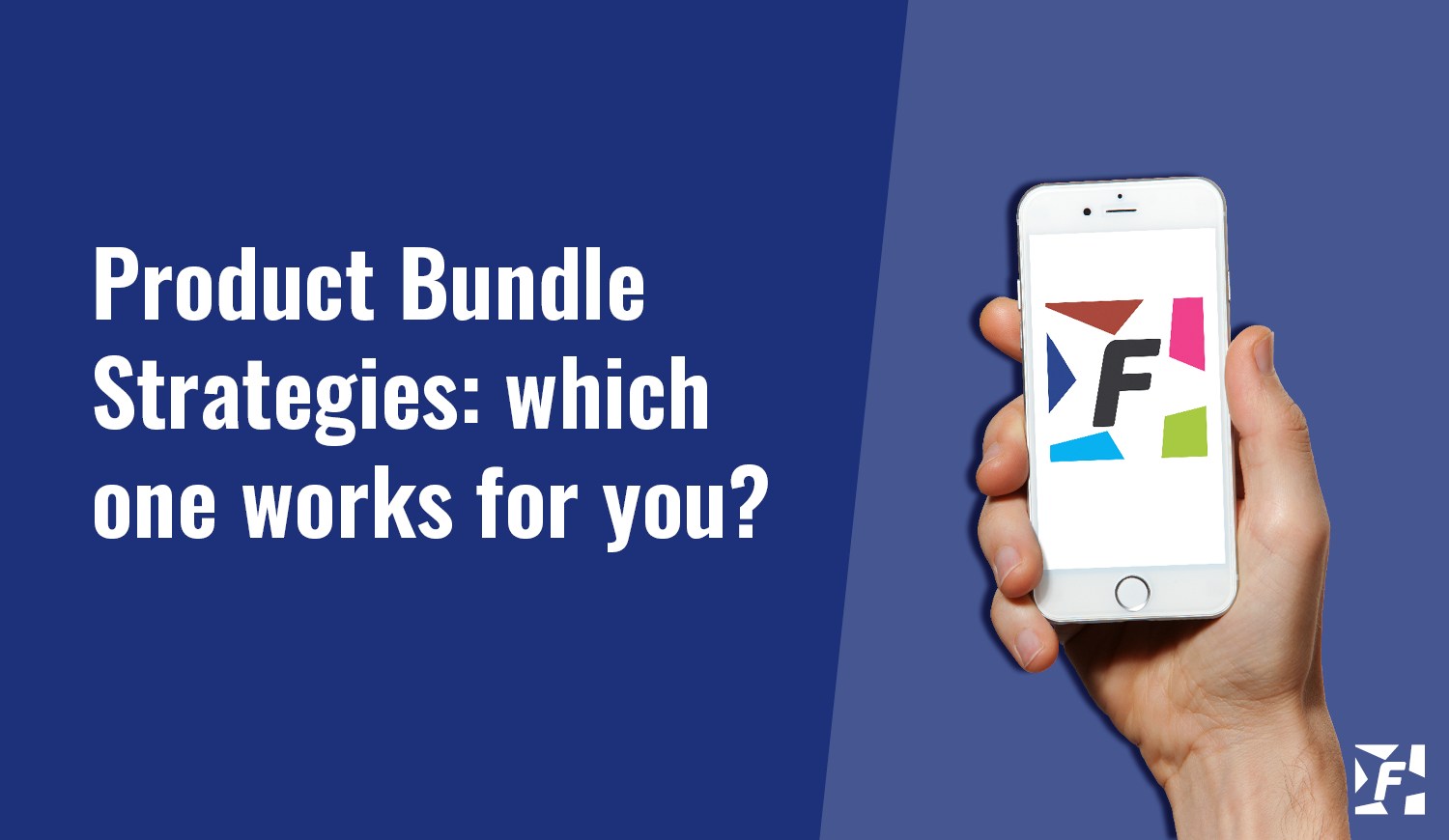Product bundle strategies: which one works for you?
Product bundle pricing is a common marketing practice that delivers greater value for your customers. A compelling product bundle is a combination of complementary products or services, packaged up into one nifty deal, and sold at a discounted price.
Whether you have a complex suite of products, or you simply want to enhance the value of your low-volume products, product bundle pricing is a smart way to increase the value of a sale, enable cost-efficiencies and boost profits.
Want to discover which B2B bundle pricing strategy works best for your business? We’ll explore each type below – from the different types of pure bundling, all the way through to mixed bundling.
Let’s dive in.
Pure bundling
Bundling a combination of products together that can’t be sold separately?
That’s pure bundling.
In other words – it’s all or nothing.
There are three variations of pure bundling: joint, leader, and mixed-leader bundling.
The three pure bundling techniques
A joint price bundling strategy joins two products to sell at a single price – most often at a lower price than the sum of the two individual products. Take G Suite, for example. Developed by Google, G Suite combines a whole host of collaboration tools and software, like Gmail and Google Drive, that you can’t purchase individually.
Similar to joint bundling, leader bundling joins two products to sell at a single price. The difference here is that one product in the bundle – the ‘leader’ product – is more valuable, and is sold alongside a ‘non-leader’ product at a discounted price.
A variation of leader bundling, a mixed-leader bundling strategy offers customers the ability to buy the ‘leader’ product on its own.
So, what’s so great about pure bundling? And is there a downside? Let’s get down to the nitty-gritty – the ups and downs of pure bundling.
Convenience for your customers
Think of a MacBook and an operating system released by Apple. Or an e-signing platform that comes with dedicated support. There’s no one without the other. These products can only be sold together – and you probably wouldn’t be happy if they weren’t.
In some ways, this is great. Especially for your more convenience-driven buyers. It simplifies the buying experience for your customers, making it easier for them to purchase what they need, while providing great value at the same time.
A strategy that works for everyone
For your customers, pure bundling reduces the risk of combining the wrong products themselves, and decreases the cost of their search. There’s no need for them to spend countless hours trying to find the right compatible products, because you’ve done all the heavy lifting for them.
And for you, lower marketing costs and a shorter sales cycle is on the horizon.
But there’s a catch.
Limited freedom of choice
This bundle pricing strategy essentially strips your customers of their choice, forcing them to buy products and services that they might not value – or even need. For example, a small consultancy firm may offer a range of services, joined together as one bundle and sold at a single price. But there might be a few features within this B2B product bundle that the customer doesn’t deem necessary to the growth of their business.
With pure bundling, there’s no option for your customer to buy items separately. So, maybe they’ll wait around for a better deal (either from you or your competitor), or they’ll just abandon your offering altogether.
A potential loss of sales
Carelessly cramming a bunch of products together is another way you could miss out on sales, especially if you offer no alternative. That’s why you need to make sure that all items within your B2B product bundle are valuable and complementary, otherwise you’ve got an army of disgruntled customers on your hands.
If you consider pure bundling as a pricing strategy, it’s important that you identify your customers’ needs, know the market, and find the right, synergetic products for the bundle. And if you’re using Salesforce CRM, you can set up your own effective product bundles with the help of a CPQ.
Mixed bundling
It’s time to tackle mixed bundling. This bundle pricing strategy is almost a complete contrast to its pure bundling. Here’s why.
The choice is yours
A mixed bundle pricing strategy offers your customers a choice between purchasing the entire bundle or its separate products. The brilliant thing about mixed bundling is that your customers can understand the true value of your bundle if they’re given the choice to buy one of the products on its own.
Picture this: you’ve booked a stand at a conference and you’re super keen to wear a shirt branded with your company’s logo. You find a supplier, customise the shirt on the website, and you’re all set to check out and receive your goods. But then, a product bundle offer catches your eye. It’s complete with a branded shirt, jacket AND a badge, so you compare the cost of this package to the individual shirt. That’s when you appreciate the value of the bundle. You’ve still got the choice to buy the shirt separately, but who doesn’t love a good deal?
A mixed bundle represents an alternative for your more price-driven customer (most likely at a discount) which serves as a way to increase demand. Plus, your customers get the freedom to make the buying decision themselves.
But there’s some bad news.
Bundling could backfire on individual products
But there’s more to mixed bundling. Sometimes, this pricing strategy can have a counterproductive effect. Imagine you’re selling an office desk and chair separately, but also as a discounted bundle. More chairs might be sold through the bundle than on its own – and this doesn’t bode well for increasing the chair’s profit.
A less attractive offer for customers
Unfortunately, the mixed bundle you thoughtfully put together might be viewed as less attractive than its more pricey, individual components. Sometimes, stacking extra features on top of an already compelling offer could ‘cheapen’ the bundle in the eyes of your customer. For example, when a more expensive item is bundled with a less expensive one, your customers might perceive the overall bundle as less expensive, affecting their willingness to purchase it.
Now, what about you?
Think about the products and services you offer. Could you effectively combine them to deliver a compelling offer to your customers? Would product bundling help you to increase the value of your sales? And remember – if you’re using Salesforce, product bundling can only be achieved with a CPQ.
If you find these bundle pricing strategies useful, work out which one of them could empower your sales team to sell more and – more importantly – make more.








